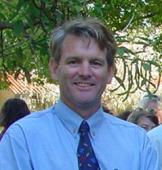traps
Trapping to prove area freedom (Fruit fly trapping project) - Final Report
| Publication Type | Report | |
| Year of Publication | 2011 | |
| Authors | De Lima, F.; Poogoda, S.; Smallridge, C.; Caldwell, A.; Reynolds, O.; van der Rijt, V.; Clark, S.; Orchard, B. | |
| Pages | 207 |
This project will develop tools for plant pathogen recognition to support rapid response to disease threats.
What is the biosecurity problem?
The development of tools for pathogen recognition enabling rapid response has been listed as one of the top issues to improve Australia's preparedness to deal with emerging disease threats.
The main outputs of this project are to:
- develop methodology for DNA detection of airborne pathogens from spore traps using known model systems.
- develop methodology for monitoring exotic and unknown pathogens in spore traps (using community analysis DNA methods such as T-RFLP).
- develop and evaluate alternative eradication strategies for high priority emergency plant pests affecting industries based on perennial species.
Who will be the end-users of this research?
This project will deliver a new PhD graduate trained in plant pathology with specific skills in pathogen detection and monitoring. The graduate will be available for employment within the Australian plant biosecurity system, enhancing Australia's capacity for pathogen recognition and enabling rapid responses to emergency plant pests.
STUDENT

Ms Bonny Vogelzang
Student CRC60017: Detection in Pathogen Mixtures - PhD
vogelzang.bonny@sa.gov.au
Phone: 08 8303 9390
Fax: 08 8303 9393
Read More
PROJECT DETAILS
Complete
Supervisor
Dr Jenny Davidson , SARDI
Supervising Institution
University of Adelaide
Term
July 2006 - June 2009
LOCATION
This project developed a dynamic, strategic trapping system which provides a similar or higher level of confidence as current static, passive grid systems in areas free from Queensland and Mediterranean fruit flies. It provides a more cost-effective and widespread fruit fly trapping network and more accurate information about fruit fly populations in remote areas of Australia.
Research outcomes
Fruit fly area freedom is vital for market access. Since 1990 it has been managed through codes of practice under national and international agreements. The standard practice is based on the deployment of static trapping grids covering orchards, towns and urban areas. The grids are relatively effective when numbers are high, but are an inefficient strategy to detect early fruit fly incursions and are becoming increasingly expensive to deploy and maintain due to the prescribed fixed distances between traps.
The aim of this project was to develop a science based rationale that will optimise trap placement for the detection of fruit fly. The strategy is to deploy traps in hosts at the time when they are most attractive to fruit flies, with the aim of gaining in efficiency in early detection of the incursive population. More effective and earlier detection will minimise the number of undetected incursions which lead to breeding populations, thereby reducing eradication costs and more effectively managing area freedom for market access.
Research was conducted in WA and NSW to determine if new methods termed ‘dynamic trapping’ would provide an equivalent proof of area freedom at lower cost. The standard trapping method where traps are placed in a grid system 0.4 - 1km apart (static trapping), was tested against a method of strategic trap deployment (dynamic trapping) in hosts at the time hosts held mature fruit whenever possible.
The dynamic trapping method was demonstrated to be more effective in the capture of C. capitata than the static trapping method in Donnybrook. The dynamic method detected fruit fly infestations earlier than the static method in Donnybrook (with low fly numbers) and required one-third to one-half the number of traps used in a static grid to obtain the equivalent information on detecting itinerant or established fly numbers required for the fruit fly code of practice. This result was consistent over the three seasons where population level was quite different in each season.
In areas with very low fly density (Manjimup, Pemberton) and in the area free region of Kununurra, there was no difference in fly detection between the static and dynamic trapping methods.
With Queensland fruit fly (Bactrocera tryoni), results were variable and inconclusive in three areas (Cootamundra, Junee and Gundagai) which had low-high fly densities. Similarly, the data for the Tumut orchard was limited and it is difficult to draw any conclusions. However, in Ganmain, a town of low fruit fly density, dynamic traps were more effective than static traps in capturing B. tryoni, in terms of both proportion of traps which detected flies and proportion of flies caught in traps.
Data mining research in South Australia showed how archival trapping data can be combined with modern spatial data mapping methods to improve the trapping processes. While historical data-sets present some problems relating to data consistency among locations, future detection data could be digitised and added to the data-set to expand and improve the analysis. This research has the potential to identify areas of low fruit fly establishment potential where trapping effort could be reduced, thereby saving on monitoring costs in some parts of designated fruit fly free areas. The results of this study indicated that the establishment of a breeding population occurred where the immediate surroundings of the property with the trap were characterised by a low proportion of fruit-tree free properties, and a higher proportion of properties with moderate fruit tree densities.
Research implications
The most critical implication of this study is that strategic placement of traps in hosts at times when they are most attractive leads to a greater likelihood of detecting flies and likelihood of earlier detection. With the dynamic trapping method therefore, fewer traps can be used to achieve a detection level similar to that of the current static method without sacrificing efficiency.
The number of traps can be reduced by 50 percent where suitable hosts are available. In trap deployment, the selection of host type should follow the preferred host type available in a given season, with larger trees with high fruit volume given preference. Results in WA indicated that traps should be placed in citrus in winter and thereafter moved to apricots or early peaches, then nectarines, plums and later peaches, followed by apples, pears, olives, figs and loquats, moving back to citrus in June.
The results obtained in this project also provide the scientific basis for quantifying Areas of Low Pest Prevalence (ALPP) thus enabling places that lose Area Freedom, or those places that cannot achieve area freedom to seek more favourable consideration for market access based on diminished fruit fly risk to trade. Since fewer numbers of traps are required to prove ALPP the costs of such a trapping regime may be affordable for growers.
With Queensland fruit fly, further research in the Fruit Fly Exclusion Zone is recommended.
An assessment of cost effectiveness of the dynamic trapping method (with reduced number of traps) compared with the current static grid system is needed to quantify the cost benefit.
Recommendations arising from this study are to:
- review trap deployment strategies in area free zones with a view to adopting dynamic trapping methods to reduce costs and aid early detection
- review the advantage of adopting dynamic trapping methods in classifying areas under active control as Areas of Low Pest Prevalence for market access, and develop appropriate methodology
- fund R&D projects on further development and verification of area freedom methods in area free zones
- adopt the techniques developed in this project in future area wide management programs.
Acknowledgments
This project was jointly supported by Cooperative Research Centre for Biosecurity (CRC NPB Ltd) and Horticulture Australia Limited (HAL).
Mrs Jane Speijers (DAFWA) provided invaluable guidance in the planning stages and carried out the statistical analyses for this project in WA. The following DAFWA staff assisted with field work in Western Australia at various stages of the project: Ms Mirjana Banovic, Ms Helen Collie, Ms Linda Fernihough, Ms Emma Mansfield, Ms Sandra Wellington and Ms Candice Wong, Ms Natalie Bort and Ms Jessica Paterson.
David Heaven, Manager of Primary Industries and Resources South Australia’s Plant Health Operations provided the fruit fly detection data. Ann Frodsham and Jo-Anne Ragless carried out the digitisation of the handwritten data. Catherine Smallridge of SARDI and Adam Caldwell of PIRSA Spatial Information Services contributed to the analysis of data in this project.
PROJECT LEADER

Dr Francis De Lima
Project Leader CRC30039: Fruit Fly Area Freedom
fdelima@agric.wa.gov.au
Phone: 08 9368 3587
Fax: 08 9368 2958
Read More
PROJECT DETAILS
Complete
Term
December 2006 – December 2009
Budget
$863,635 (cash and in-kind support)
PROGRAM DETAILS
LOCATION
CORE CRC PARTICIPANTS
SUPPORTING CRC PARTICIPANTS
This project was a scoping study to determine the potential of using an unmanned aerial vehicle, fitted with a spore trap, to detect and monitor spores of plant pathogens. The aim was to develop a sampling system that would have the ability to spatially monitor fungal spores, and protocols to interpret their spatial distribution. This tool will greatly enhance the ability to detect new incursions of fungal pathogens and to enable more accurate delimiting of distribution. The technology will allow for earlier detection of harmful plant pest or disease incursions in difficult areas and provide efficient and effective airborne surveillance.
The project was led by Rodney Walker, with Felipe Gonzalez (Queensland University of Technology (QUT)/Australian Research Centre for Aerospace Automation (ARCAA)) as the Principal Investigator, Les Zeller (Department of Employment, Economic Development and Innovation (DEEDI)) as advisor and engineer and Pritesh Narayan (QUT/ARCAA) as research fellow.
Research outcomes:
- an advanced airborne biosensor with capabilities to geo-locate spores was developed and tested
- seven publications, and
- four flight tests.
Research implications:
This tool will greatly enhance the ability to detect new incursions of fungal pathogens and to enable more accurate delimiting of distribution. The technology will allow for earlier detection of harmful plant pest or disease incursions in difficult areas and provide efficient and effective airborne surveillance.
Acknowledgements:
We would like to thank and acknowledge the support of DEEDI, ARCAA and the QUT throughout this research project.
We would also like to acknowledge the additional contributions of Richard Glassock (UAS Launch Controller), Scott Mcnamara (UAS Flight Controller) who assisted in the integration and UAS flight testing components, Francesco Tamagnone Cosmelli (Exchange Post Graduate Researcher – Italy) who assisted in the wind tunnel and UAS flight testing components.
A/Professor Zoran Ristovski also collaborated with the research project and provided access to aerosol equipment such as the particle sizer and atomiser and also provided valuable insight as an aerosols expert.
PROJECT LEADER

Felipe Gonzalez
Project Leader CRC30032: Flying Spore Traps
felipe.gonzalez@qut.edu.au
Phone: 07 31381363
Read More
PROJECT DETAILS
Complete
Term
July 2007 - September 2009
Budget
$503,692 (cash and in-kind support)
PROGRAM DETAILS
LOCATION
There are increasing international concerns about food quality and safety. Import requirements are becoming more demanding and exporters including Australia now need not only to declare they are free from plant and animal pests and diseases, but they need to demonstrate it too. As a result, pest surveillance has become a critical tool to secure market access. Exporting countries now need to provide accurate, credible data with evidentiary chain to confirm freedom status.
Research outcomes
Technical equipment like Personal Digital Assistants (PDAs) have emerged as a powerful tool not only to collect information but also to improve the quality and application of the data collected. Cooperative Research centre for National Plant Biosecurity (CRCNPB) PDA software developed with Visual CE was successfully tested during the 2007 post-border detection of Khapra beetle in suburban Western Australia by providing evidence of complete eradication via 1,273 trap inspections. This achievement was supported by GPS-located traps, digital voice navigation itineraries, digital time and date stamps, field printed barcode labels, site imagery, Google Maps integration all in a single hand-held unit.
New PDA hardware and software continues to be developed by the CRCNPB for use in other pest surveillance activities. These include hazard site pest surveillance, stored grain fumigation monitoring, grain insect resistance testing and fruit fly phenology studies.
Research implications
Australia remains committed to World Trade Organization agreements, sanitary and phytosanitary agreements, the International Plant Protection Convention and international sanitary and phytosanitary measures. We recognises the need for quarantine plant pest surveillance data of the utmost integrity is essential to support area freedom negotiations.
With most of Australia’s agriculture produce exported, securing and maintaining market access is critical as is the need to demonstrate freedom from certain plant and animal pests and diseases. Surveillance is an important tool for securing market access and as discussed exporting countries now need to provide accurate, credible evidence to confirm absence (i.e known not to occur) for pest freedom status.
This CRCNPB project focused on the development of pest surveillance data collection software and hardware using hand-held computers or PDAs. This approach provides chain of evidence control, increases the volume of data collected as well as its integrity through relational databases and seamless data transfer to corporate systems.
Acknowledgements
Damian Shepherd, Iain Martin, John Bruce (Department of Agriculture and Food Western Australia (DAFWA) Spatial Information Systems) and Bob Vassallo (DAFWA Animal Biosecurity) provided technical input. Department of Fisheries and Forestry Surveillance Reference Group participants collaborated with beta testing the Urban Surveillance application; Peter Gillespie, Deborah Kent, Craig Murdoch, Tony Monteith, Rebecca Yarrow, Bruce Baker, Wayne Marshall, Russell Elliott, Megan Szczerbanik, Nita Ramsden, James Swan, Heather Wallace, Richard Johnston, Cain Roberts, Melanie Hay, Jo Slattery, Sharyn Taylor, Stephen Dibley, Paul Pheloung, Gareth Men, Greg Hood, Debra Riddell, Peter Frecklington. Shirani Poogoda (DAFWA) beta tested the Fruit Fly Phenology application. Ern Kostas (CBH Group) beta tested the Grain Fumigation application. Peter Davis (DAFWA) beta tested with ant surveys on Christmas and Norfolk Islands.
PROJECT LEADER

Mr Robert Emery
Project Leader CRC30014: PDA-Assisted Surveillance (phase one)
remery@agric.wa.gov.au
Phone: 08 9368 3247
Fax: 08 9368 3223
Read More
PROJECT DETAILS
Complete
Term
September 2006 – August 2009
Budget
$436,800 (cash and in-kind support)









